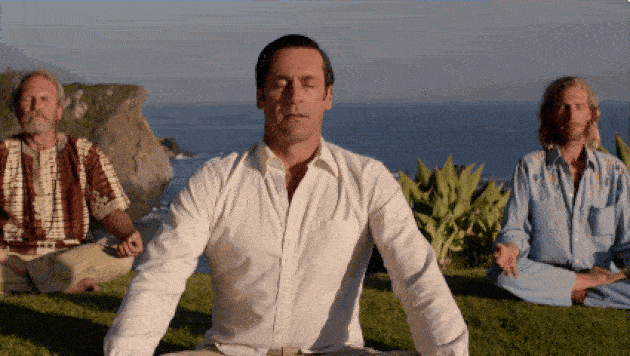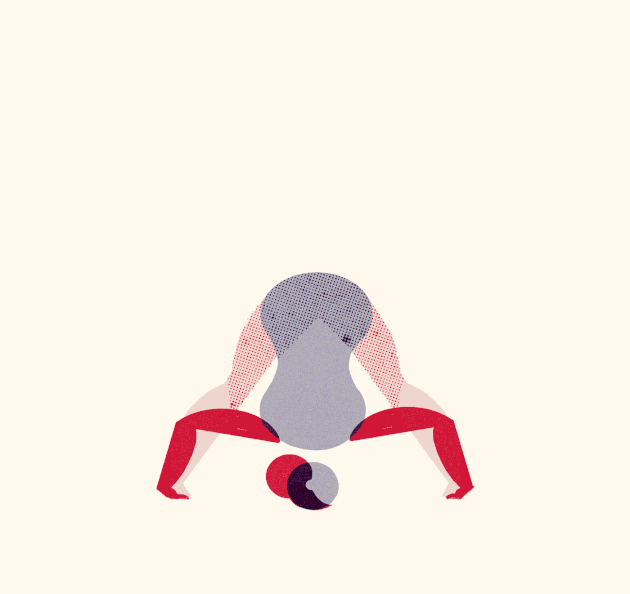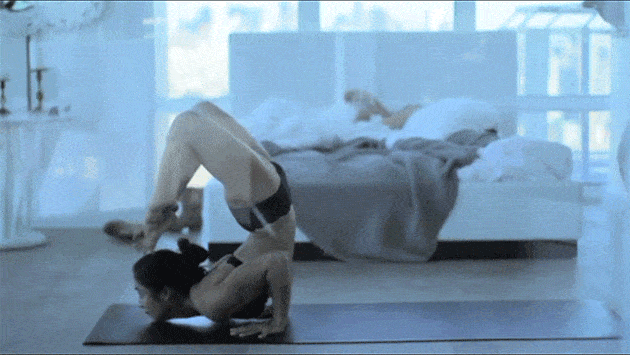I'm a convert. I started practicing Hatha yoga just a year ago. This decision was not meaningful, rather forced. A month before the start of classes, I underwent a small operation, after which the doctor restricted me in physical activity for six months. When he released me for rehabilitation, he forbade me everything I loved: aerobics, step, tai-bo, running and other active fitness areas. I couldn't figure out how I could live without the usual activities. The doctor suggested that yoga wouldn't do much harm in my case. That's how my future fate was determined.
I came to the first lesson in a very skeptical mood. And she left the hall a different person, and this is not an exaggeration. A month after the start, I suddenly realized that I was waiting for the next practice with almost more impatience than pre-school children are waiting for Santa Claus.
But I have never considered yoga as a serious alternative to physical exercises. Who knew that the physical component of yoga would make less impression on me than the spiritual component. Yes, I began to like my noticeably tightened figure. However, having plunged deeper into classes, I began to consider physical improvements only as a pleasant bonus to the internal transformations that were happening to me. Just a year of practice brought me to a new stage of spiritual development.
That's what I've learned.
Almost the first thing I heard from the instructor: without proper breathing, yoga is just gymnastics. At first I didn't really understand this statement. Well, let's say I'm breathing, but what does it change? The understanding that breathing is the main tool of practice came gradually. If you do not breathe correctly, you will not be able to correctly build an asana. Hold your breath, close your eyes, and this will do yourself more harm than good.
Deep breathing relaxes and calms, rapid breathing activates. Yoga taught me to breathe consciously. When I breathe like this, I feel a flow of energy moving inside me, which I myself can direct in the right direction. Tell me who did this before, I would only twist my finger at my temple.

In what life situations can conscious breathing be useful? Yes, in every unintelligible and stressful. When it is impossible to follow the well-known advice: in any incomprehensible situation, go to bed or drink tea. But even when you can "sleep" with a problem or wash it down with tea, it would be useful to pre-breathe it.
My choleric temperament, for example, sometimes fails with outbursts of righteous anger. Now, feeling a surge of irritation, I prefer to just breathe for a few minutes. You can breathe deeply — four cycles of breathing per minute, you can not be very deep, counting from 20 to 0. This is an incredibly effective technique that can put thoughts in order and look at the situation from a different angle. Yes, I do not always manage to remember the magic power of breathing. But there are fewer and fewer breakdowns.
There was a funny and instructive case in the classroom. When performing the inverted triangle pose, some of us used wooden bricks. When the asana was performed on one side, it was necessary to take the starting position and only then put the brick on the left. And I, always in a hurry everywhere, grabbed a brick when I was climbing out of the slope. The instructor, of course, noticed my movement: "Where are you in such a hurry?" "Optimizing the process," I joked. And I heard in response: "Do you optimize or do you not know how to let go?"
It became clear that we are talking about something much more important than moving a wooden brick in space. A lot of people literally live in their past. Clinging to long-passed situations, they are not able to see their present and are not ready to plan for the future.
How do I use the ability to let go in everyday life? I, like any normal person, have a mood when unpleasant circumstances of the past come to mind. It would seem that a hundred years have passed since I unfairly insulted someone under the influence of the moment or, for example, deceived. The people offended by me have long since left the horizon of my life. If I can't change the consequences of this situation, then what's the point of reliving it over and over again? I can just learn a lesson, forgive myself and move on. Otherwise I'll be stuck in the past like a mouse in a trap. I will lose the strength to get out, instead of moving along my path.
At the beginning of yoga classes, I could not resist comparing myself with other participants in the process. Standing upside down, she surreptitiously watched others and noted what they were doing and what they were not. When I got tired of spying on others, I started paying more attention to myself. This would be what I needed if I didn't correlate my skills with the skills of my colleagues in the group. I compared and got upset when I saw my lag. I was happy when I realized that I was doing the exercise no worse than others or better than some.

It was only over time that it dawned on me that I was not doing yoga, but feeding my vanity. Realizing that I would not achieve anything in yoga in this manner, I had to scare off the ego by pretending indifference to the colleagues around me with mats. Then this indifference became a habit.
Experiences with the ego are very directly related to real life. We are all different — in bodies, souls, goals and desires. But for some reason we love to compare ourselves with others. Sometimes the comparison is not in our favor. In this case, we refuse to recognize our merits. Sometimes we see that we are clearly superior to others. And this superiority takes away our reason.
When I got to know the yogis from my group better, I realized that I had been doing nonsense for a long time. We all had different levels of physical fitness. Former athletes were interspersed with retired women who took up fitness for the first time in their lives. Someone was recovering from an illness or childbirth.
To be here and now. It is difficult and sometimes impossible. I suspect that this will always be a challenge for me.
Despite trying to breathe consciously and concentrate on my current goal — to perform the asana correctly — I can still, as a year ago, catch myself wandering somewhere outside the hall. Then I suddenly remember that my daughter needs help with the crafts for the competition, then I frantically come up with something to feed the family for dinner. At this time, my asana is floating as my thoughts are floating. But one has only to concentrate on the current moment, as the body itself builds up in the right vectors and organically settles in space, and breathing becomes yogic.

How and why to use this skill in real life? Have you noticed that many significant moments of our life seem to be erased from memory? Because when they happen, we are mentally in a different place. This happens to me, for example, when I'm busy working on another text. I can ask my daughter three times in half an hour how things are at school. Or put three bags of milk in a supermarket cart, although I didn't plan to buy it.
Setting yourself up for the moment is actually not that difficult. To do this, it is enough to remember that this moment will never happen again.
At the end of each lesson comes my favorite moment. After a relaxing shavasana, the instructor invites us to sit down and take any comfortable position.
I sit cross-legged, fold my palms in namaste and tilt my head slightly. Mentally, we begin to thank this day, the universe, ourselves and everyone who is near us now, for the inner harmony and energy that the next practice has filled us with. From the mouth of the instructor flows love and gratitude to us and the world around us. This love can be felt physically.

Gratitude is one of the best skills that we can transfer from yoga to real life. Only the lazy have not heard about the power of gratitude. After about six months of yoga classes, I felt a strong inner need to keep a personal gratitude journal. Every night before going to bed, I create a note in my phone. In it, I thank everyone who "made" my day.
And somehow it's easier and better for me to live after these recordings. I reread them later and realize what wonderful people I am surrounded by. And that my life is amazing. And if I sometimes complain about it, it means that I forgot the universal yoga lessons.